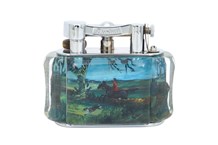
This copper alloy third-millennium BC Sumerian figurative sculpture has been returned to Iraq by The Metropolitan Museum of Art. Image: The Metropolitan Museum of Art.
The museum recently launched a new Cultural Property Initiative to review its “collecting practices” which includes “undertaking a focused review of works in the collection; hiring provenance researchers to join the many researchers and curators already doing this work at the museum”.
The third-millennium BC Sumerian figurative sculpture has been in its collection since it was bought in 1955.
However, recent analysis of the circumstances prior to this purchase by Met scholars established that the “work rightfully belongs to Iraq”.
Responsible collecting
Max Hollein, The Met’s director and chief executive officer, said: “The Met is committed to the responsible collecting of antiquities and to the shared stewardship of the world’s cultural heritage.”
The statue was repatriated during a ceremony in Washington DC with the prime minister of the Republic of Iraq, Mohamed Shia’ Al Sudani, and a number of senior figures from Iraq and from the museum.
Hollein said the museum values the important relationships it has fostered with colleagues in Iraq and he “looks forward to continuing the ongoing and open dialogue between us”.
The copper alloy depiction of a nude man carrying a box could represent a priest carrying an object for a temple foundation deposit or an offering related to the building of one.
The museum said that temples were the most important institutions in Mesopotamian cities of the Early Dynastic period (2900-2350BC) and that only certain categories of people were represented as nude at this time: priests, athletes, mythological heroes and prisoners of war.





